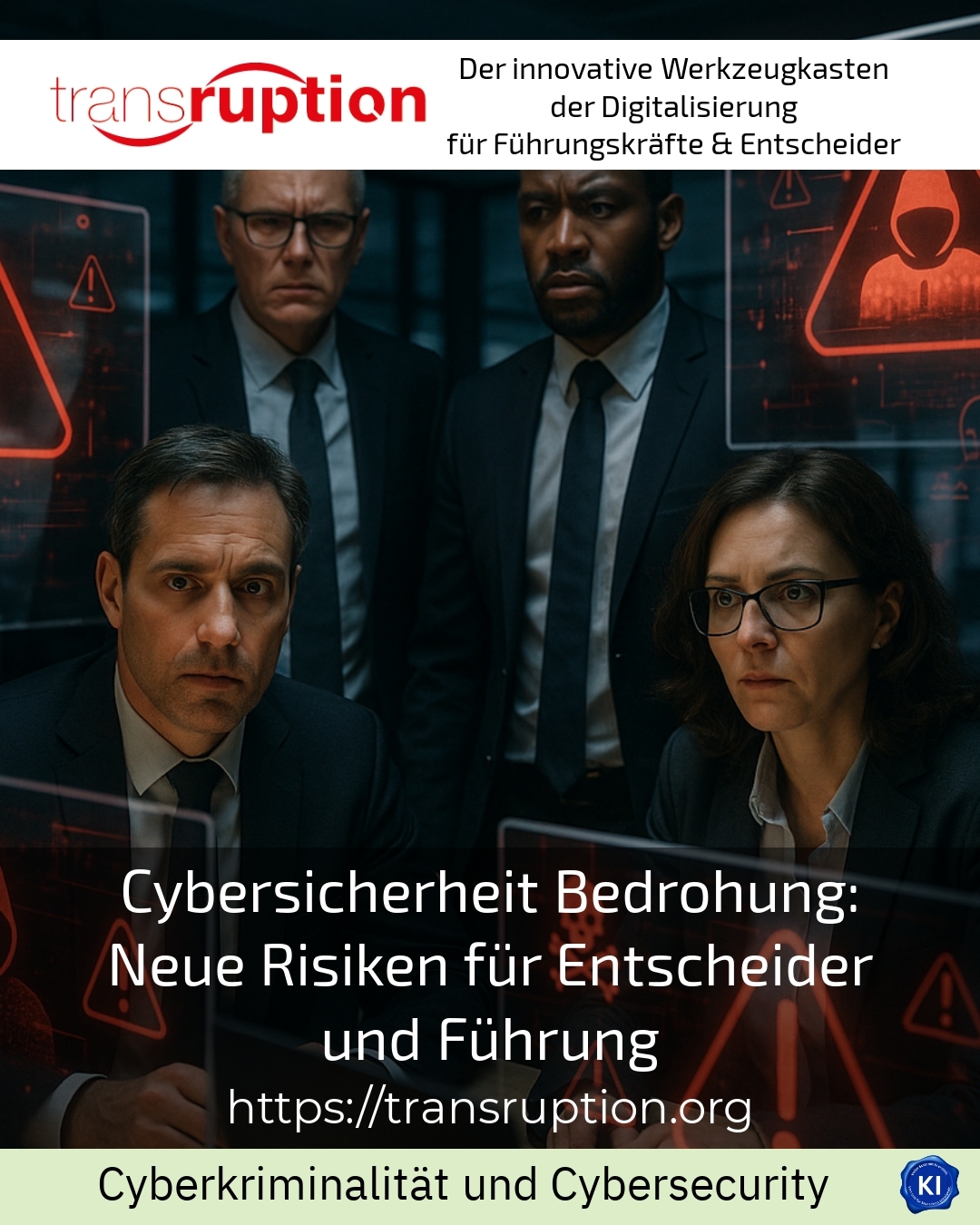The cyber security threat is one of the biggest challenges facing decision-makers and managers today. Companies in all sectors are confronted with increasingly complex attacks. The damage is immense and extends far beyond financial losses. Many organisations underestimate the risk, even though the threat situation is constantly growing. The cyber security threat affects not only IT departments, but the entire management.
Why cyber security threat is a management task
Cyber attacks are no longer a technical problem. They affect the entire organisation. Decision-makers must actively manage the cyber security threat. Most companies feel the effects directly in their day-to-day business. Production downtime, data loss and reputational damage are frequent consequences.
An example from the automotive industry: A major manufacturer was paralysed by a ransomware attack. Production came to a standstill. Supply chains collapsed. The costs totalled several million euros. Attacks are also not uncommon in the healthcare sector. Hospitals had to block patient data because hackers had encrypted the systems. In the financial sector, customer data was stolen and sold.
The cyber security threat is therefore a cross-industry threat. Decision-makers need to ask themselves: Are we really prepared? And: What protective measures are we taking?
Current trends and new risks
Attackers' methods are becoming increasingly sophisticated. Artificial intelligence is being used for both attacks and defence. However, many companies are not yet using AI in a targeted manner. Phishing remains one of the most common forms of attack. Attackers use social media, emails and chat tools to gain access to sensitive data.
An example from the energy industry: A provider was infiltrated by a targeted phishing attack. The hackers gained access to control systems. The result: power outages in several regions. Attacks are also widespread in the retail sector. Online shops were paralysed by DDoS attacks. Customers were no longer able to place orders.
The cyber security threat is growing with digitalisation. New systems and applications offer attackers more and more entry points. Misconfigurations and outdated software are common vulnerabilities.
Cybersecurity threat and the role of leadership
Decision-makers must actively manage the cyber security threat. This means regular risk analyses, training for employees and clear emergency plans. Managers should not just rely on the IT department. The cyber security threat affects all areas.
An example from logistics: a freight forwarder was paralysed by an attack on the booking system. The result: delays and customer losses. In the education sector, examination data was stolen. The school had to reorganise the exams.
The cyber security threat is therefore a management task. Decision-makers need to ask themselves: What are the risks? And: How do we protect our organisation?
Practical tips for decision-makers
Decision-makers can actively manage the cyber security threat. This includes regular risk analyses, training for employees and clear emergency plans. Managers should not just rely on the IT department. The cyber security threat affects all areas.
An example from the construction industry: A company was paralysed by an attack on the project management system. The result: delays and cost increases. In tourism, booking data was stolen. The result: loss of customers and reputational damage.
The cyber security threat is therefore a cross-industry threat. Decision-makers need to ask themselves: Are we really prepared? And: What protective measures are we taking?
BEST PRACTICE at the customer (name hidden due to NDA contract) and then the example with at least 50 words.
My analysis
The cyber security threat is one of the biggest challenges for decision-makers and managers. Companies in all sectors are confronted with increasingly complex attacks. The damage is immense and extends far beyond financial losses. Many organisations underestimate the risk, even though the threat situation is constantly growing. The cyber security threat affects not only IT departments, but the entire management.
Further links from the text above:
Cybercrime 2025: How secure are German companies?
BSI situation report 2025: progress in cyber security
Persistently high threat level and increasingly politically motivated cyber attacks
For more information and if you have any questions, please contact Contact us or read more blog posts on the topic TRANSRUPTION here.
















